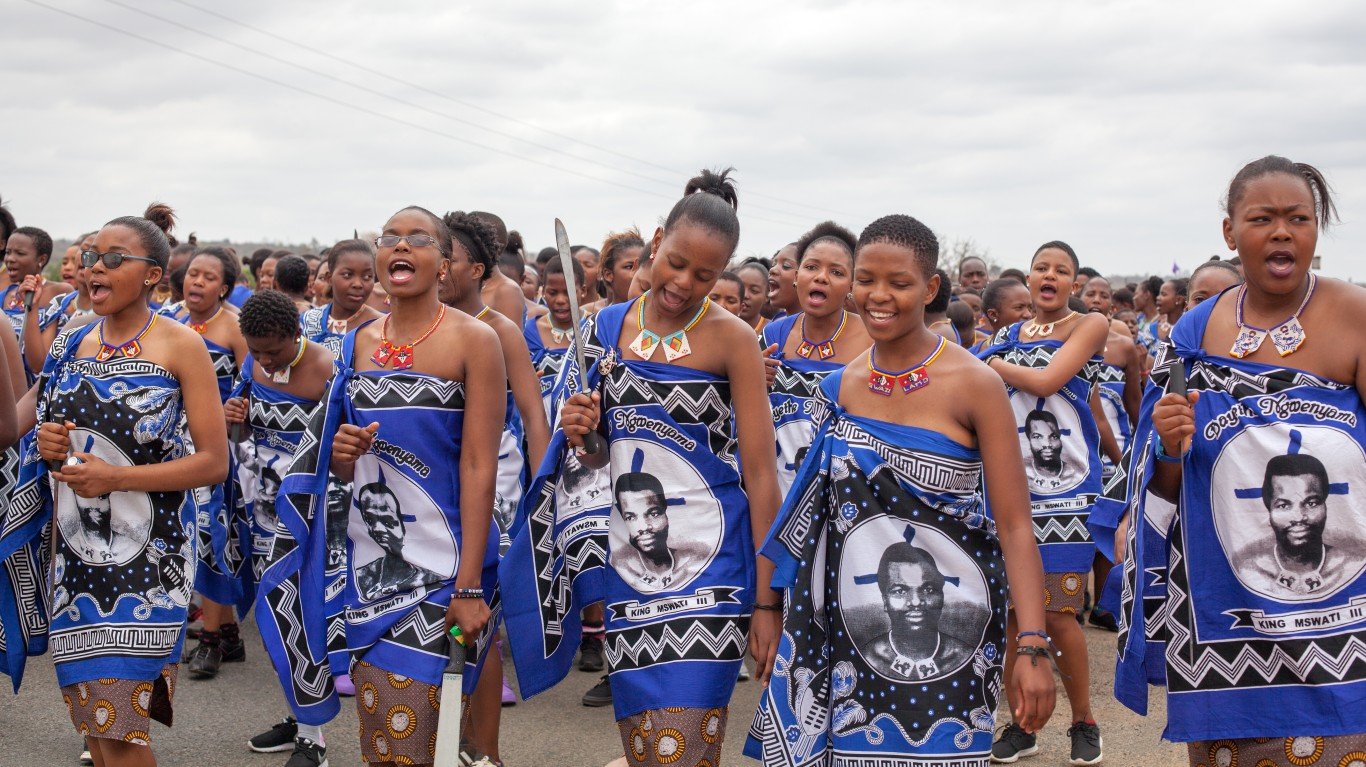
25. Eswatini
> Women Peace and Security Index (0 worst to 1 best): 0.602
> Women’s mean years of education: 6.3, #51 worst of 170 countries
> Pct. of women w/bank account: 27.4%, #31 worst of 170 countries
> Absence of legal discrimination (0 worst to 100 best): 46.3 – #12 worst of 170 countries
> GDP per capita, 2021: $3,978, #69 lowest of 170 countries
> Population, 2021: 1,192,271 (females: 600,441, 50.4%)
This small landlocked kingdom that borders South Africa and Mozambique is populated mostly by ethnic Swazi. Only about 46% of Eswatini women are employed and about 19% report being victims of domestic violence by an intimate partner. A survey conducted in 2007 found that a third of girls ages 13-17 experienced sexual violence before age 18. Eswatini has the world’s highest rate of HIV. The country was known as Swaziland until 2018 when King Mswati III renamed it to honor its 50th independence anniversary.
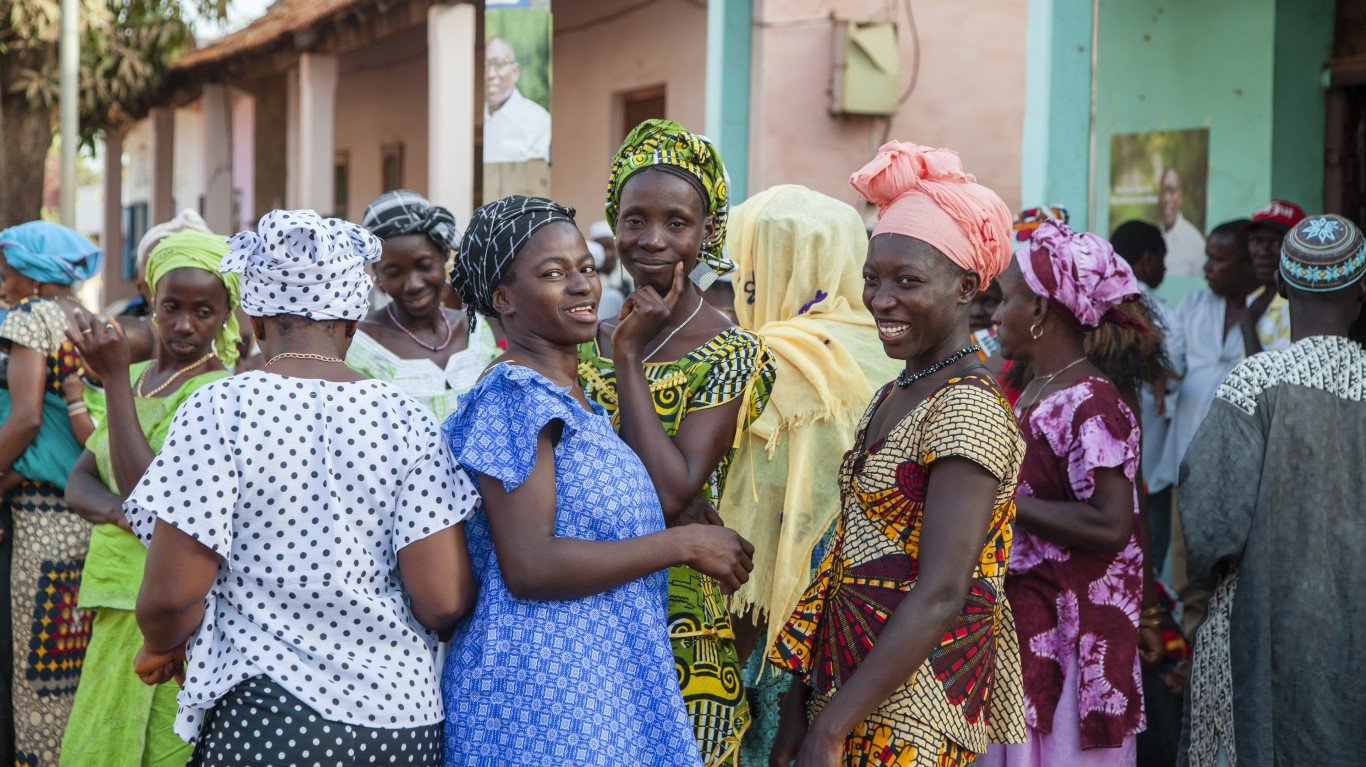
24. Guinea
> Women Peace and Security Index (0 worst to 1 best): 0.602
> Women’s mean years of education: 1.5, #4 worst of 170 countries
> Pct. of women w/bank account: 19.7%, #19 worst of 170 countries
> Absence of legal discrimination (0 worst to 100 best): 76.3 – #65 worst of 170 countries
> GDP per capita, 2021: $1,189, #30 lowest of 170 countries
> Population, 2021: 13,531,906 (females: 6,846,006, 50.6%)
Women in Guinea have some of the lowest education levels in the world at just 1.5 years. About one in five women in this West African country have been subject to domestic violence from intimate partners. The gender rights organization U.N. Women reported that in 2018 about same share of Guinean girls and women ages 15-49 reported they had been subject to physical or sexual violence from a former intimate partner in the previous 12 months. A Guinean court is currently hearing a landmark trial of crimes committed during a 2009 stadium massacre that included security forces raping more than 100 women in retaliation.
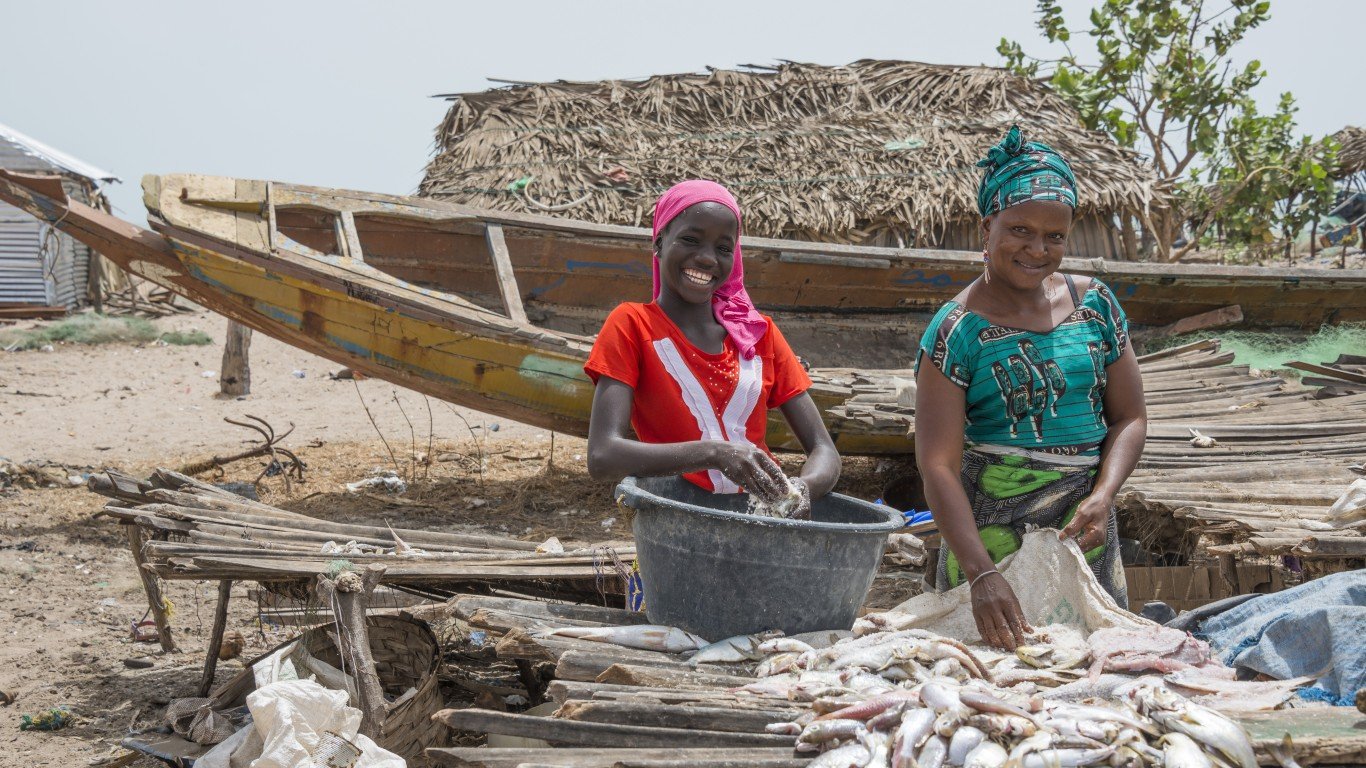
23. Gambia
> Women Peace and Security Index (0 worst to 1 best): 0.597
> Women’s mean years of education: 3.3, #15 worst of 170 countries
> Pct. of women w/bank account: 27.7%, #32 worst of 170 countries
> Absence of legal discrimination (0 worst to 100 best): 74.4 – #55 worst of 170 countries
> GDP per capita, 2021: $772, #18 lowest of 170 countries
> Population, 2021: 2,639,916 (females: 1,326,796, 50.3%)
Gambian women have among the lowest parliamentary representation in the world. According to the antipoverty group the Borgen Project, less than half of women in this tiny West African country are literate. The organization Girls Not Brides estimates that about one out four Gambian girls marry before they turn 18. With local support for the practice of female genital mutilation, UNICEF reported in 2020 that about half of Gambian girls under age 15 have undergone the procedure.
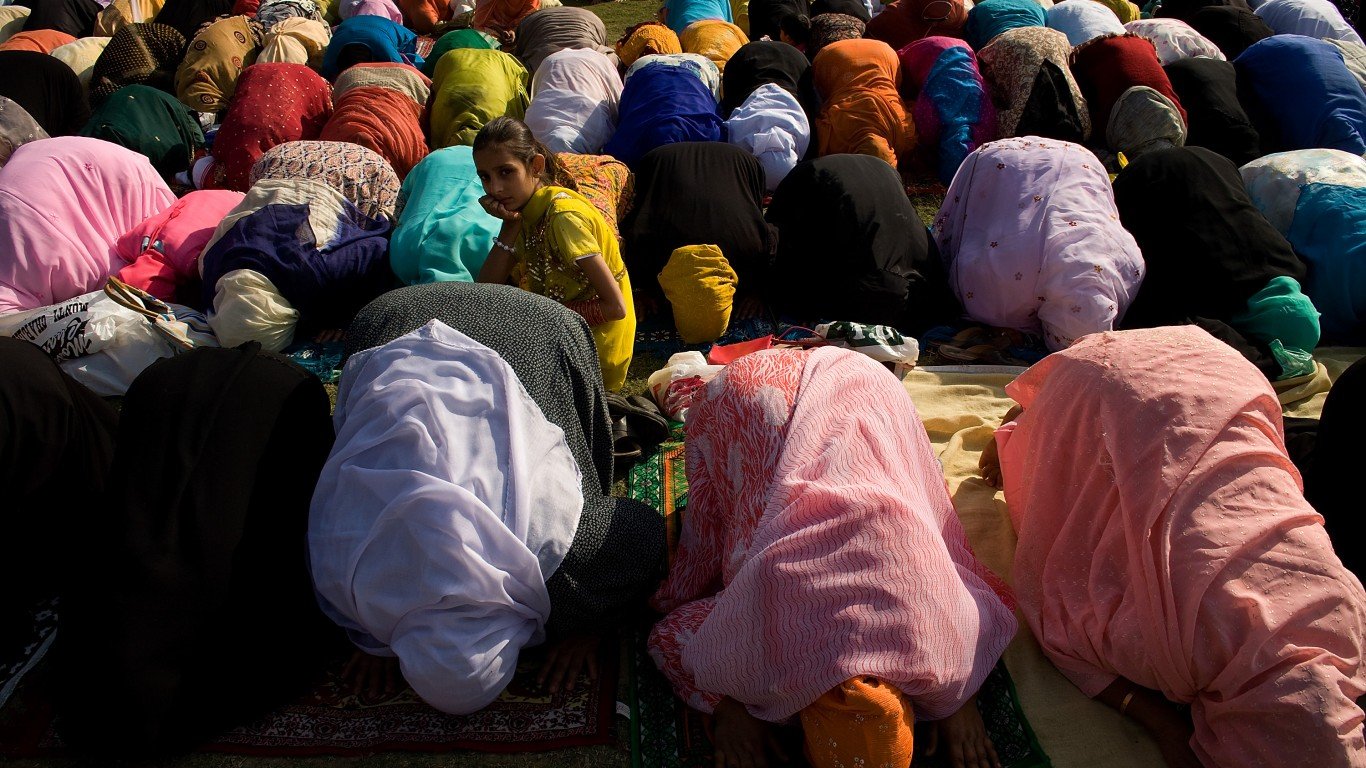
22. India
> Women Peace and Security Index (0 worst to 1 best): 0.597
> Women’s mean years of education: 5.4, #41 worst of 170 countries
> Pct. of women w/bank account: 76.6%, #124 worst of 170 countries
> Absence of legal discrimination (0 worst to 100 best): 74.4 – #55 worst of 170 countries
> GDP per capita, 2021: $2,257, #48 lowest of 170 countries
> Population, 2021: 1,407,563,842 (females: 681,060,412, 48.4%)
India is by far the largest country to rank so low in gender equality and security. It also has the highest bias against newborn girls among the countries on this list and third highest among the 170 countries reviewed based on sex at birth ratio. India’s male-to-female ratio at birth of 1.10, or 110 boys for every 100 girls, is artificially high due to Indian families conducting aborting female fetuses (the worldwide ratio is 1.07, and it is 1.05 in the U.S.). However, that practice appears to be waning, according to a 2022 Pew Research report, showing that “son bias” is on the decline in India. Other problems persist, however, including high rates of women unemployment and intimate partner violence.
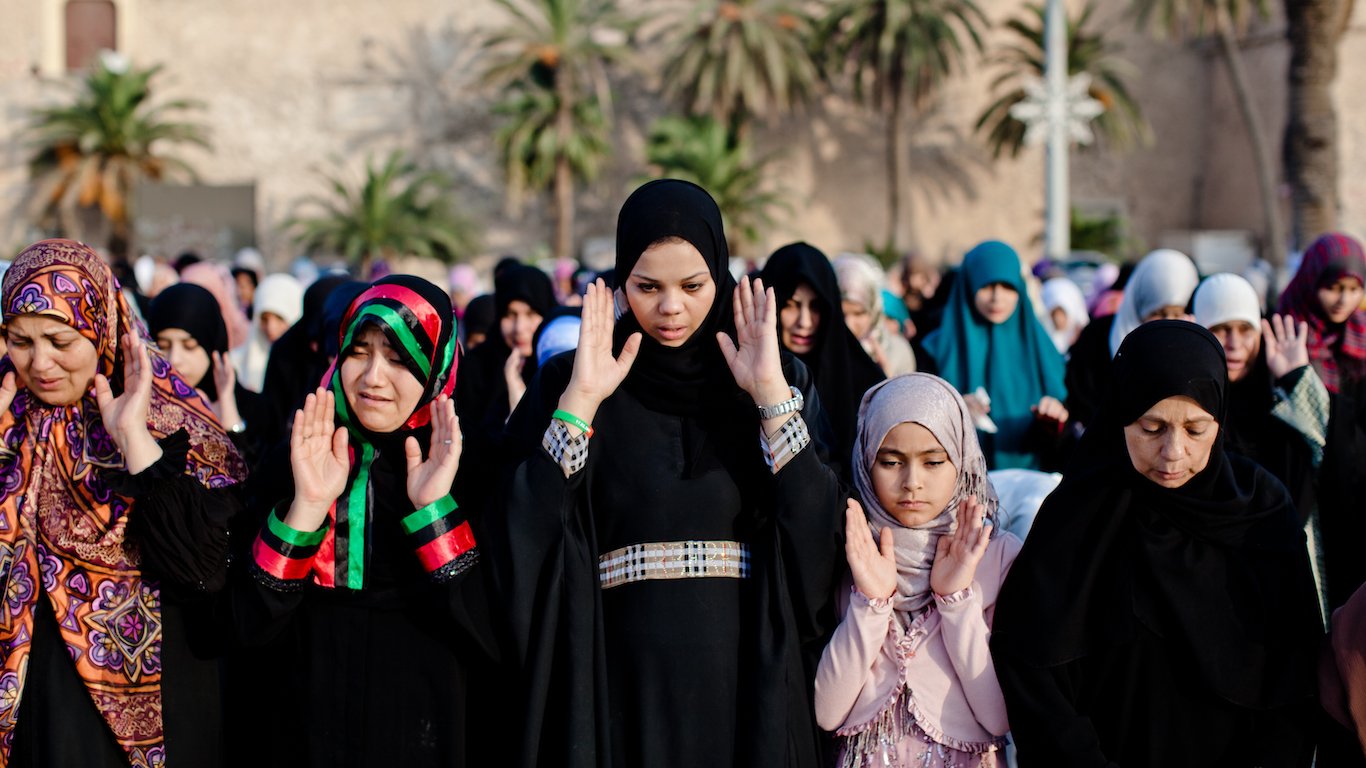
21. Libya
> Women Peace and Security Index (0 worst to 1 best): 0.596
> Women’s mean years of education: 8.5, #76 worst of 170 countries
> Pct. of women w/bank account: 59.6%, #95 worst of 170 countries
> Absence of legal discrimination (0 worst to 100 best): 50.0 – #18 worst of 170 countries
> GDP per capita, 2021: $6,357, #94 lowest of 170 countries
> Population, 2021: 6,735,277 (females: 3,325,769, 49.4%)
Conditions for Libyan women have not improved since the 2011 country’s revolution despite women’s active role in the political turnover. “Libyan women still lack basic rights and access to political participation and remain underrepresented in the official institutions of the state,” says the Netherlands-based Gender Concerns International. Following a visit to Libya in December 2022, U.N. Special Rapporteur on violence against women, Reem Alsalem, called on authorities in Libya to do more to fight the “grave levels of violence faced by Libyan women and children,” as well as non-Libyan women and girls, such as African migrants attempting to get to Europe.





